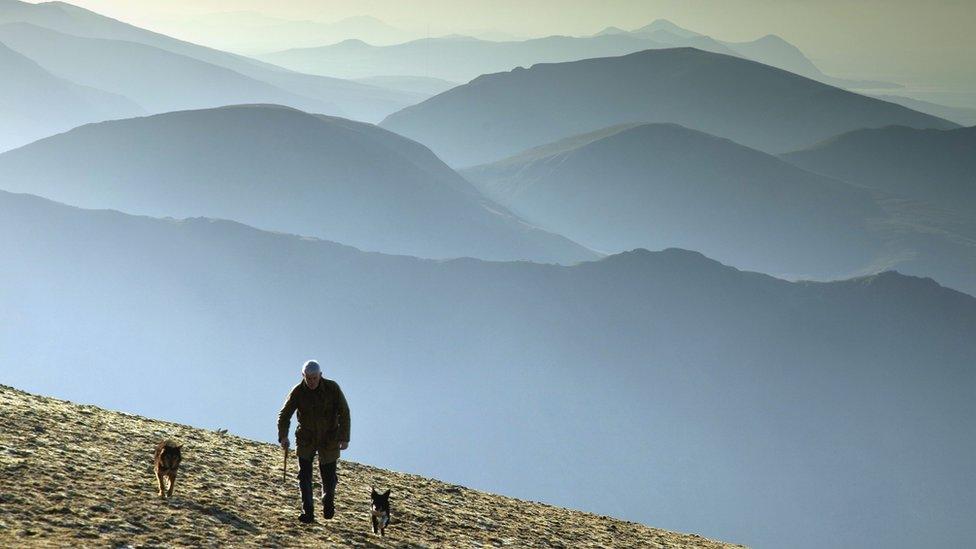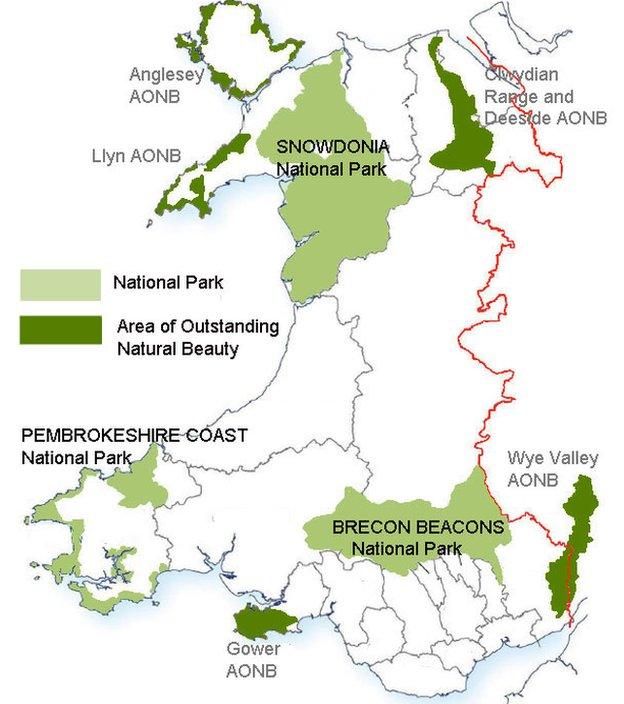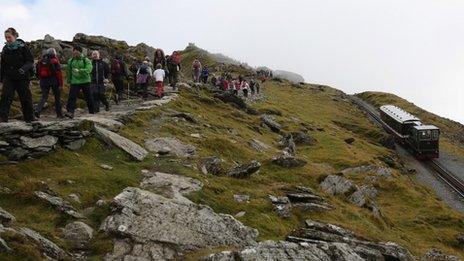National parks and beauty spots must 'revive rural areas'
- Published

National parks and protected beauty spots in Wales need to foster "far more vibrant rural communities", an independent review says.
Politicians and those managing the landscape need to do more to develop business, jobs and affordable housing.
Three national parks and five areas of outstanding national beauty (AONB) were examined.
The natural resources minister said it endorsed his view that a fresh approach is needed.
Carl Sargeant commissioned the study, chaired by Prof Terry Marsden - of Cardiff University's school of planning and geography - to see how Wales' eight "natural landscapes" are working.

The first national park in Wales was established in Snowdonia in 1951, while it is nearly 60 years since the Gower peninsula - with its 70 sq miles (181 sq km) of beaches and cliffs - became the first AONB in Wales and England.
Earlier studies , externalestimate the national parks alone are worth over £500m to the Welsh economy.
They employ nearly 30,000 people - with 38% linked to the environment.
But for a long time, rural areas have been net losers in health services, schools, shops and broadband, Prof Marsden's report says.
It also warns the current focus on city regions could take more investment away from rural areas.
At the moment, rural areas tend to export their raw materials, but the real economic value would be in producing things locally too.
In turn, it would help keep more young people in local jobs.
The report is set against a background of a national parks' population which is forecast to decline - but the age profile is getting older.
The number of over 65s living in the Brecon Beacons alone is predicted to rise by 28% by 2028.

CASE STUDY: 'NOT EVERYONE WANTS TO WORK IN A COFFEE SHOP'
Farmer Gethin Havard said the park's economy needs more than coffee shops and outdoor pursuits
The report points to good examples of projects already working, including hydro-electric power in the Brecon Beacons, external. Local alliances have produced 10 projects to increase jobs and 40 to develop new products.
Gethin Havard, a farmer in Sennybridge, Powys, and vice-chair of the British Wool Marketing Board, said there needed to be jobs beyond coffee shops and outdoor pursuits.
He knows of young people from farming backgrounds who have moved away.
"Jobs are very scarce. Agriculture is at the heart of this community and is struggling at moment.
"But the opportunity to diversify is very limited - you won't see any sizeable windmills or solar farms in the national park."
Natural Landscapes in Wales
3
National Parks
5
AONB
-
75% of Wales' population visits a national park each year
-
5 contain areas of coast
-
25% of Wales' land mass is included
-
80,000 people live in the three national parks
Welsh government "empowering" the national landscapes to become centres for innovation and catalysts of rural development "within their environmental limits"
Ministers should also ensure parks and AONBs contribute to tourism and green energy growth
The national landscapes need to better understand their local and regional economies, and especially their tourism economies
Mr Sargeant is appointing Lord Dafydd Elis-Thomas to chair a new Future Landscapes working group, bringing together national parks, AONB interest groups and councils.
It will report after the Assembly election.
The minister believes landscapes can also help promote healthier living with the wider population - so-called "factories of well being".
"We will continue to protect national parks and AONBs but we can use them better," said Mr Sargeant.
- Published13 November 2013
